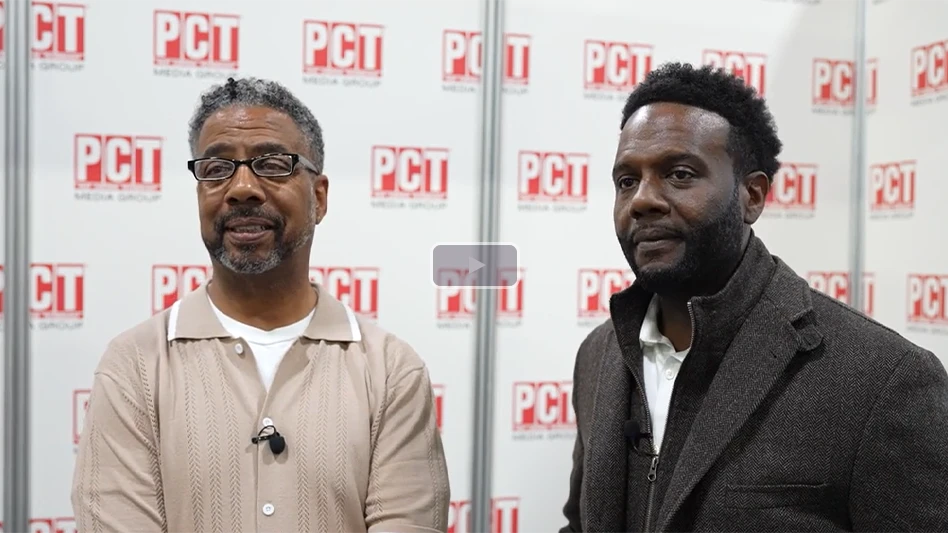Editor’s note: June Van Klaveren is a frequent contributor to PCT magazine and the following is an excerpt from her new book "The Edge Up." Information about the author and book can be found at www.TheEdgeUp.com. The book also can be ordered at www.pctonline.com/store.
Searching the Internet for customer service resources produced many hits. The term that repeatedly surfaced was "customer relationship management," a buzzword in the customer service industry.
Seemingly, customer relationship management (CRM) is the goal in up-and-coming companies. Reflecting on this industry jargon this question came to mind: Is the goal of great customer service merely "customer relationship management"? Do we just want to manage customer relationships or do we want to focus on developing and maintaining great relationships with our customers? Some might say that this is managing relationships. But the term managing implies ho-hum, mediocre service. A better term might be "customer relationship focus."
CUSTOMER RELATIONSHIPS. Let’s take a look at the characteristics of customer relationship management (CRM) as opposed to customer relationship focus (CRF):
• Customer relationship management makes service a temporary endeavor. Companies hold contests and programs and get employees excited for the duration of the contest. Then, after the contest, everyone goes back to their old way of handling customers. No real change has taken place.
• Customer relationship focus continually trains employees in customer service practices. There is no end to the attention that customer service receives.
• Customer relationship management separates customer service from the real efforts of the company. A customer service department handles calls from customers and solves customers’ problems. Separating responsibilities by setting up a customer service department encourages employees to think that customers are someone else’s responsibility.
• Customer relationship focus makes service everyone’s responsibility.
• Customer relationship management concentrates on the superficial. Signs on phones that say "smile" when the employee is disenchanted with working conditions will not be a genuine effort.
• Customer relationship focus starts from the top down. If management focuses on employees, this same caring attitude will be reflected in how employees focus on customers.
• Customer relationship management centers upon solving customers’ immediate problems only.
• Customer relationship focus encourages employees to continue to show customers that they are valued, whether or not they have problems with the company.
• Customer relationship management implies that customers don’t talk to each other.
• Customer relationship focus handles customers knowing that an unhappy customer tells a minimum of nine or 10 people about their experience. By the same token, they tell only four or five other people about their good experiences.
• Customer relationship management doesn’t emphasize the lifetime value of the customer.
• Customer relationship focus determines the lifetime value of the customer and handles the customer in a manner that reflects their value.
• Customer relationship management doesn’t make problem solving a top priority. Rather, CRM companies channel the problem into a process chain and handle it in the order it was received.
• Customer relationship focus takes care of problems as they happen — immediately!
• Customer relationship management sets policies for various aspects of customer service.
• Customer relationship focus doesn’t hide behind policy when it comes to solving customers’ problems. Each problem is different and is handled individually.
• Customer relationship management ignores the fact that for every complaint received by a company, there are actually 26 customers with problems, six of which are serious.
• Customer relationship focus fleshes out other problems in order to remove unseen obstacles to customer and business success.
• Customer relationship management tries to fit current services into the customer’s needs.
• Customer relationship focus makes an effort to customize products and services to fit the needs of the customer.
• Customer relationship management relies on market research for customer service decision making.
• Customer relationship focus makes changes to respond to customer feedback as opposed to research information.
• Customer relationship management encourages the collection of customer data but doesn’t necessarily use it as a basis for developing future services.
• Customer relationship focus collects and analyzes data on customers for a better understanding of their needs for future services.
• Customer relationship management shares information with employees on a need-to-know basis only.
• Customer relationship focus shares customer information with all employees and follows the principle that the more informed an employee is, the better service he or she will provide.
• Customer relationship management rarely polls customers on satisfaction of services.
• Customer relationship focus monitors customer satisfaction as a matter of procedure.
• Customer relationship management hopes customers continue to do business with the firm, but makes few efforts toward seeing that it happens.
• Customer relationship focus makes customer retention a measure of overall success with structured plans and incentives to keep good customers.
CONCLUSION. So, having read and contrasted the two philosophies, where does your company fall — management or focus?

Explore the January 2004 Issue
Check out more from this issue and find your next story to read.
Latest from Pest Control Technology
- Webinar: Maximizing Cash Flow — Key Strategies for Business Growth
- WorkWave Announces Wavelytics
- Rising Rat Populations Linked to Warming Temperatures, Urban Growth, Study Finds
- How Might the 2024 Elections Impact PCOs
- Keeping Track of Termite Identification
- Mosquito Joe Earns EPA's PESP Gold Level Designation
- Texas PestVets Coat Drive Collects Over 850 Items for Soldiers’ Angels
- Conquer Ants Fast!





